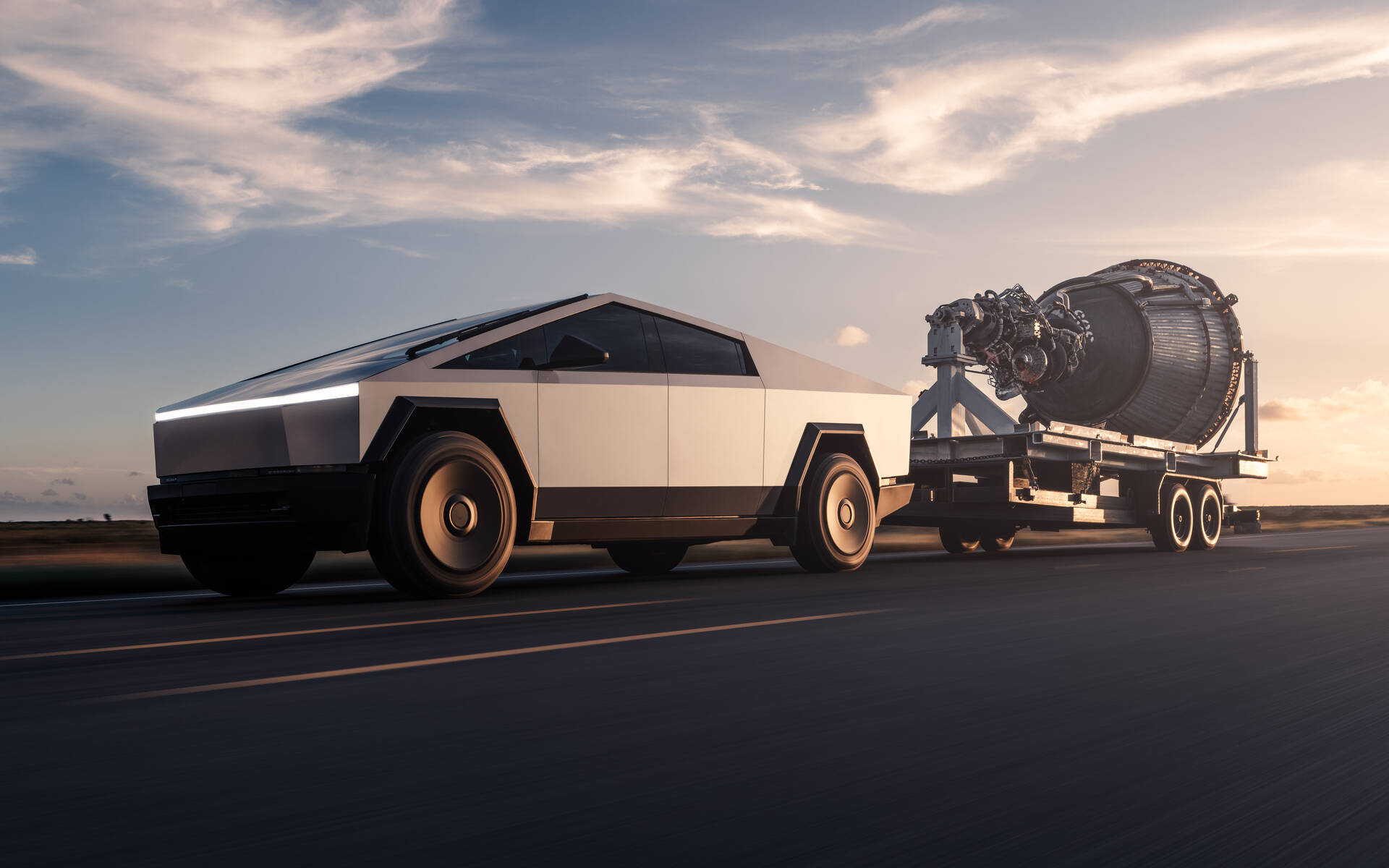
In a fascinating glimpse into the future of military preparedness, the U.S. Air Force has unveiled a bold and undeniably intriguing plan that combines cutting-edge technology with the timeless need for realistic training. The service intends to acquire two Tesla Cybertrucks, not for deployment to the battlefield as armored vehicles, but rather as formidable targets for precision munitions during critical testing and training exercises. This revelation, stemming from contracting documents published online, signals a forward-thinking approach to anticipate potential threats, even if those threats might, surprisingly, involve a vehicle as uniquely distinctive as the Cybertruck.
This isn’t merely a whimsical choice; the Air Force articulates a compelling strategic rationale for selecting these futuristic pickups. Their concern is rooted in the belief that “adversaries who may use them in the future” could leverage the Cybertruck’s robust characteristics. Such a proactive stance underscores a commitment to ensuring that U.S. forces are not just prepared for the known, but also for the dynamically evolving landscape of global conflict.

These two Cybertrucks are part of a larger procurement, a cohort of 33 vehicles destined for the sprawling expanse of White Sands Missile Range in New Mexico. This iconic testing ground is set to host a series of live missile fire tests, all in support of U.S. Special Operations Command’s vital Standoff Precision Guided Munition (SOPGM) training. While the Air Force’s wish list includes a diverse array of other vehicles—ranging from sedans and Bongo trucks to conventional pickup trucks and SUVs—it is the Cybertruck that has been singled out by name, a testament to its singular presence and the unique challenges it presents.
What is it about the Cybertruck that has captured the attention of military strategists? The answer lies in its groundbreaking construction. The Air Force explicitly states that the truck “doesn’t sustain the amount of damage expected from a major impact.” This resilience necessitates a direct assessment, as “tests need to reflect real-world situations.” It’s a clear indication that traditional target vehicles might not adequately prepare units for the unique properties of the Cybertruck.
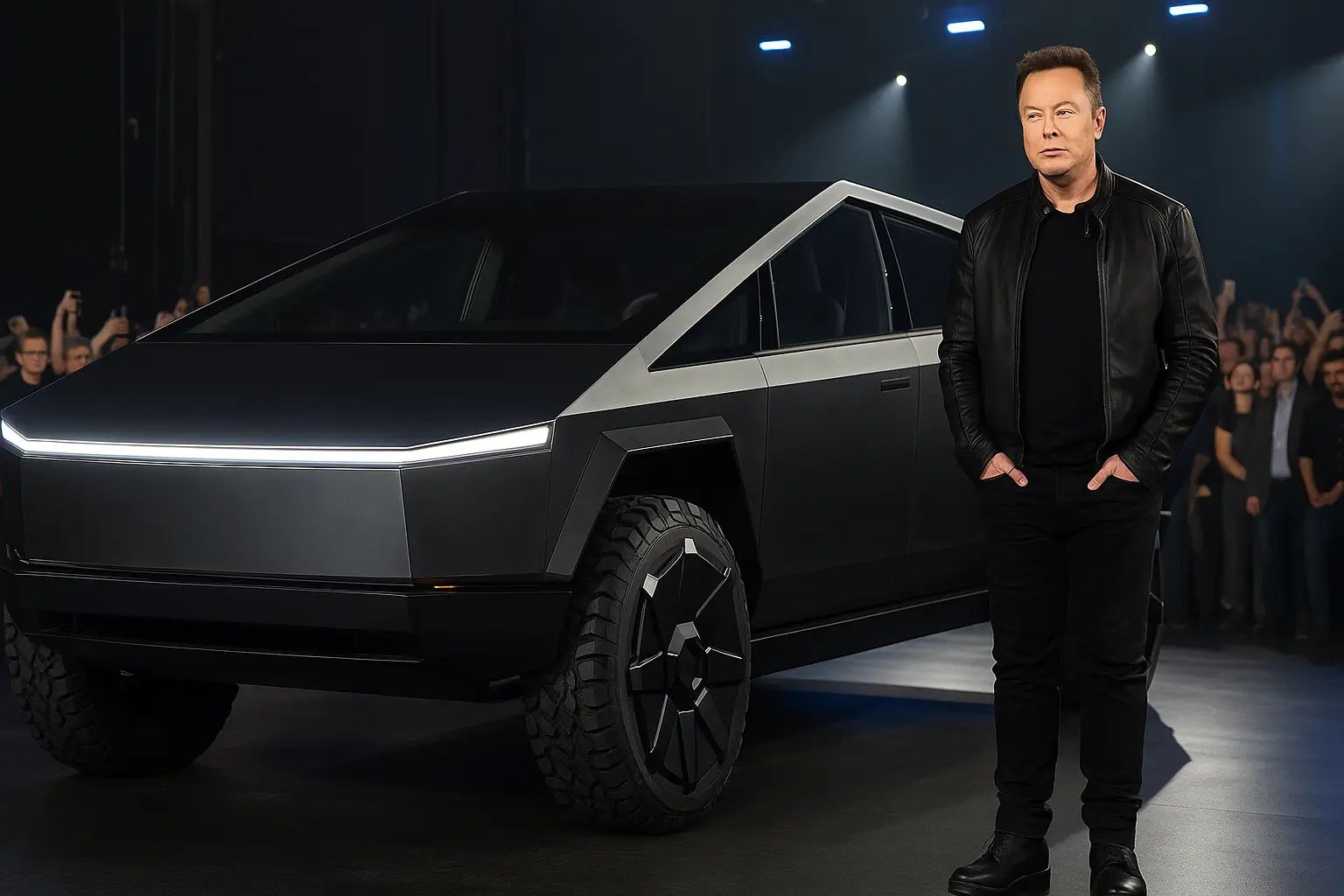
The Air Force elaborated on its reasoning in the contract documents, painting a vivid picture of the vehicle’s distinctiveness. “The Cybertruck’s aggressively angular and futuristic design, paired with its unpainted stainless steel exoskeleton, sets it apart from competitors typically using painted steel or aluminum bodies,” the documents assert. This unpainted, stainless steel body, reminiscent of aerospace engineering, is a key factor in its perceived toughness.
Furthermore, the Cybertruck’s innovative electrical architecture is also a point of military interest. The Air Force notes that its “48V electrical architecture provides superior power and efficiency, a feature that rivals are only beginning to develop.” This advanced system not only offers efficiency but could potentially influence how the vehicle responds to various impacts, making it a valuable subject for study under combat conditions.
The origin story of the Cybertruck itself adds another layer to this intriguing military interest. When Tesla CEO Elon Musk unveiled the much-anticipated pickup in 2019, its bulky, unconventional design immediately sparked comparisons to armored vehicles and even tanks. Musk famously claimed the body was constructed from the same stainless steel alloy employed in SpaceX rockets, hinting at its purported invincibility.
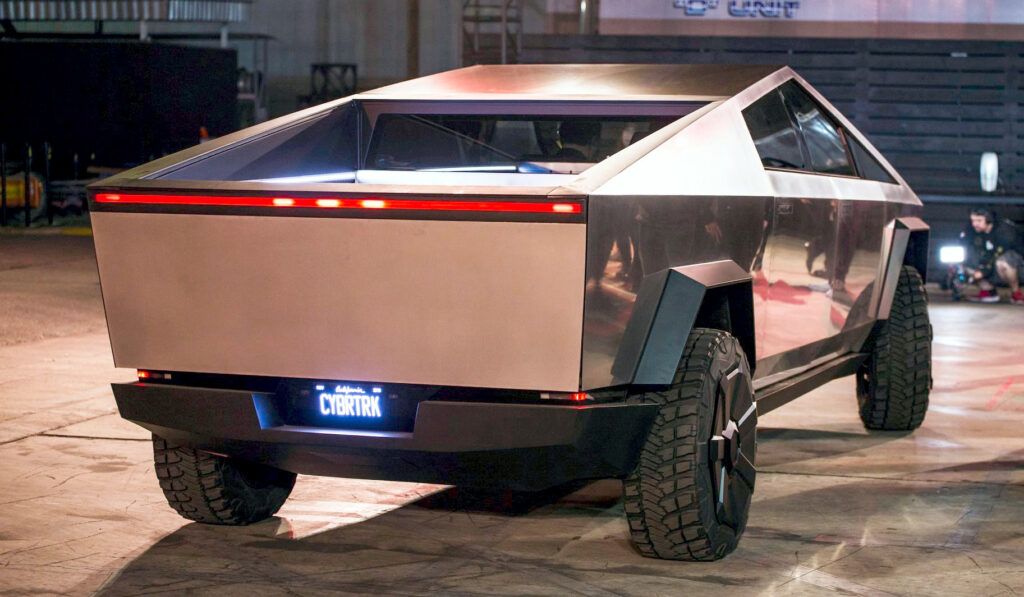
While some of Musk’s bolder claims, like the “unbreakable” windows, were famously disproven on stage during the unveiling (a memorable moment when a metal ball shattered two windows), the Cybertruck has indeed demonstrated impressive resistance to certain forms of attack. Tesla later released a YouTube video showcasing the vehicle’s exoskeleton shrugging off gunfire from various weapons, including a tommy gun, pistol, and shotgun. This demonstrated bullet resistance, even if primarily limited to the side panels, is precisely the kind of characteristic that would pique military curiosity.
Indeed, in a partially redacted contract document, the Air Force’s justification becomes even more direct: “In the operating theatre it is likely the type of vehicle used by the enemy may transition to Tesla Cybertrucks as they have been found not to receive the normal extent of damage expected upon major impact.” This compelling statement highlights the proactive nature of this procurement, aiming to close any potential knowledge gaps before they become critical liabilities in actual operations.
The question of which adversaries might adopt Cybertrucks for military use remains unelaborated in the documents. However, the context does offer a provocative instance: in 2024, Ramzan Kadyrov, the leader of Russia’s Chechen republic, shared a video of a gun-mounted Cybertruck. He claimed it had been dispatched to the front lines of Russia’s conflict in Ukraine, a stark, albeit anecdotal, example of the vehicle potentially finding its way into unconventional military applications. Kadyrov later even claimed Tesla remotely disabled at least one of them, adding another layer of complexity to the digital battlefield.
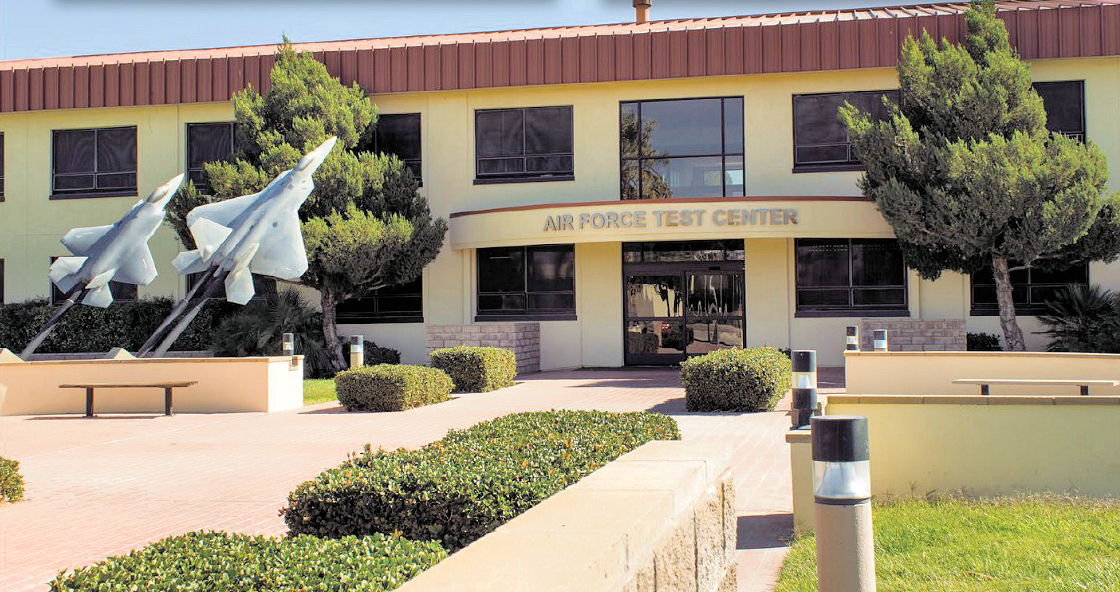
It’s important to understand the broader context of this acquisition. The Air Force is not just randomly picking expensive cars to blow up. Federal contracting documents show that the Air Force Test Center (AFTC) needs these “Towable Target Vehicles” to support critical training for U.S. Special Operations Command’s Standoff Precision Guided Munition (SOPGM) program. This includes the use of highly specialized air-launched precision-guided munitions like the AGM-114 Hellfire, the AGM-176 Griffin missile, the GBU-69/B Small Glide Munition (SGM), and the GBU-39B/B Laser Small Diameter Bomb (LSDB).
The unique requirement for Cybertrucks, which are specifically named unlike the other 31 general vehicle types, demands a formal sole-source justification. This justification document, a redacted copy of which is publicly available, further underscores the Air Force’s diligence in their market research. They explicitly conducted research on February 13, 2025, to assess the Cybertruck’s design, materials, impact resistance, and innovative technologies, concluding that no other vehicle offered comparable features.
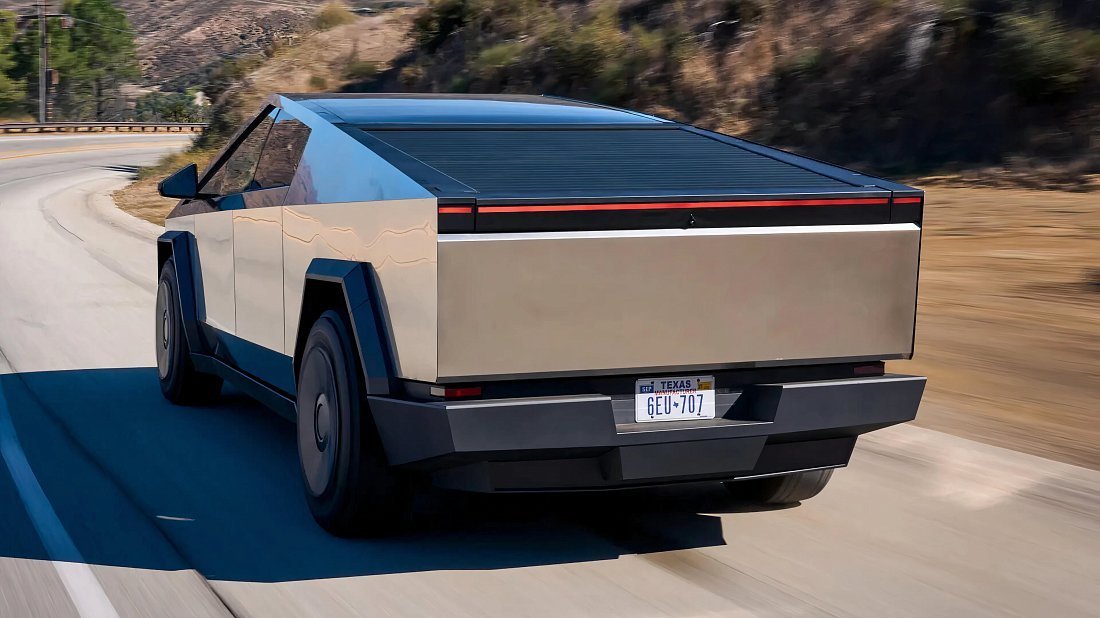
While a new Cybertruck typically fetches between $70,000 and $80,000, with the top-tier “Cyberbeast” variant exceeding $100,000, the Air Force’s intent isn’t necessarily to acquire brand-new, fully functional vehicles. Federal documents note that the trucks “don’t need to be in working condition.” For the purpose of training and testing, they simply need to have “working tires and be able to roll,” or “intact bodies, glass, mirrors and wheels that work,” indicating that even salvaged vehicles could fulfill the requirement, which could potentially save taxpayer dollars while still providing realistic targets.
This focus on simulating “real-world situations” is paramount to military training. U.S. forces have a history of conducting airstrikes on convoys and small vehicles, particularly in areas like Syria and Iraq, where precision-guided munitions have been deployed against targets such as ISIS leadership. These operations have utilized a variety of munitions, from conventional explosive missiles to the highly specialized R9X, which, famously, foregoes an explosive payload for deployable blades, earning it evocative nicknames like “Ninja Bomb” and “Flying Ginsu.” Understanding how different vehicles, including the unique Cybertruck, react to these advanced munitions is therefore crucial.
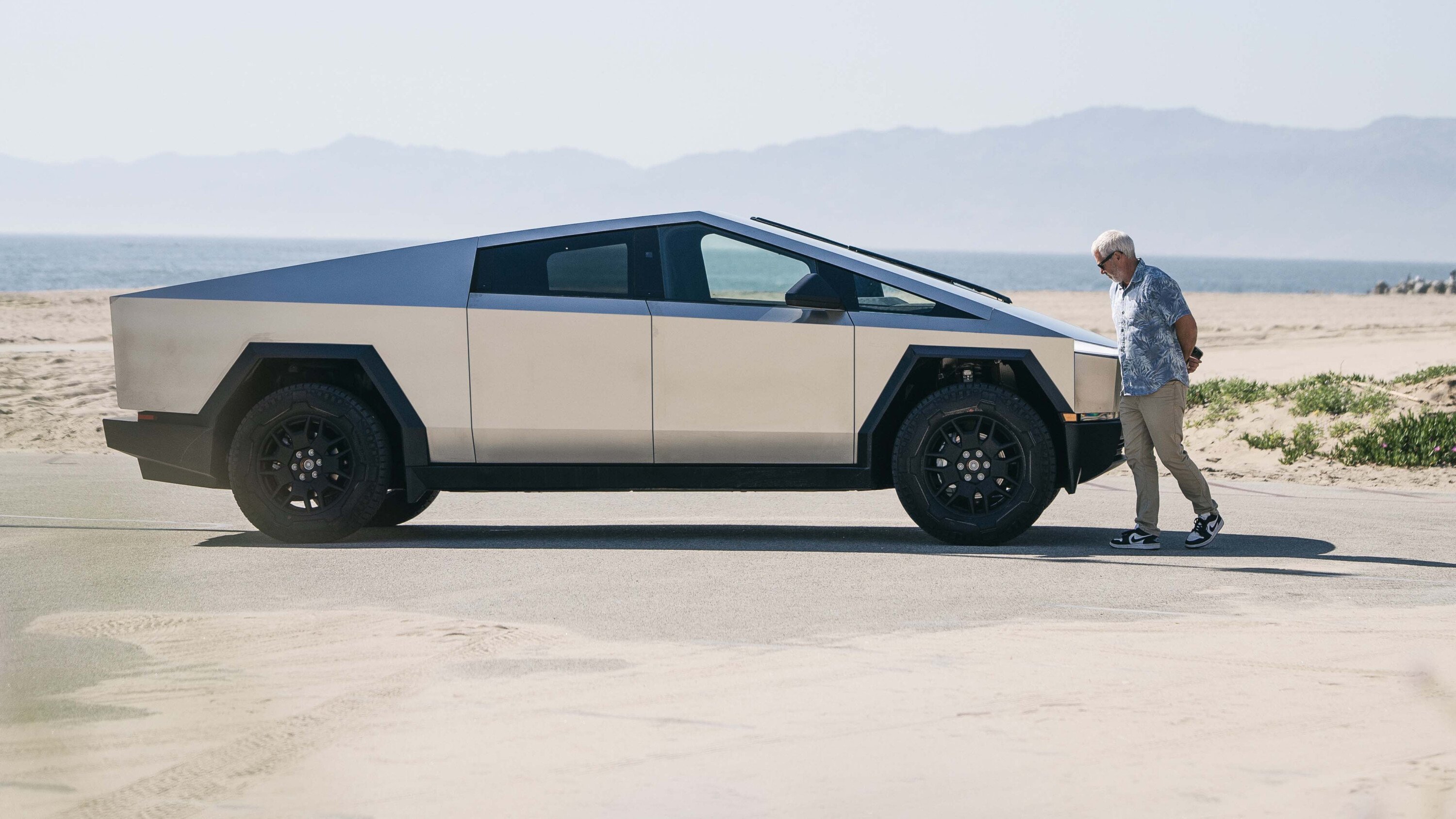
The Cybertruck’s path since its 2019 unveiling has been far from smooth. Despite Musk’s initial projections of over 500,000 annual sales, Tesla sold fewer than 50,000 Cybertrucks last year, with reports of flagging sales and manufacturing issues, including panels falling off and serious damage from potholes. However, the military’s interest transcends market performance; it’s about the inherent physical properties and design attributes that could translate into a battlefield challenge, regardless of the vehicle’s commercial success.
Elon Musk himself has previously mused about the Cybertruck’s military potential. At an Air Force Space Pitch Day event in 2019, he brought up the truck’s capabilities. Furthermore, the U.S. Department of State reportedly considered an order for armored Teslas, potentially Cybertrucks, for U.S. diplomats, though that plan was later shelved indefinitely. This indicates a broader, albeit fluctuating, interest in the vehicle’s unique protective qualities beyond its consumer appeal.
While the exact timeline for these explosive tests remains unclear, one thing is certain: the Cybertrucks, alongside the other target vehicles, are destined to be reduced to smithereens. The prospect of the Air Force releasing footage from these tests is certainly an exciting one, offering an unprecedented look at how this supposedly “apocalypse-proof” vehicle, touted as an “armored personnel carrier from the future,” fares against the might of modern precision munitions.

